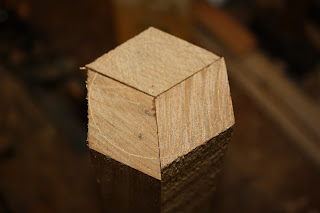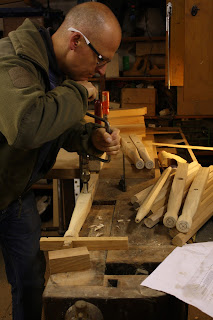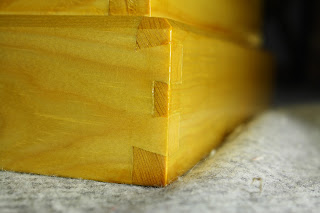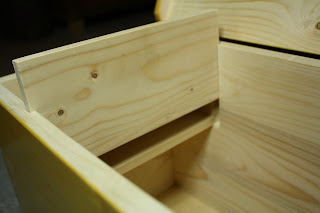Technically it doesn't count as a chair, but we agreed that it was OK to make it during the event despite that.
I silver soldered a tri-arm bolt from some of the 8 mm lag bolts that we used for the arm rests on the Roorkees. I think that it took me around 5 minutes in total to make such a bolt.
First I cut some lag bolts to a correct length so the legs would rotate on the part without a thread.
Next the ends were filed so they had a 120 degree angle on the end, and I placed them on a piece of heat resistant brick. The brick I used is actually a spare vermiculite stone for our wood burning stove, but it won't damage the stone to do a bit of use before one day replacing one of the stones inside the stove.
The legs for the Roubo campaign stool are pie shaped. It is relatively easy to make those on a table saw. Just remember that they shouldn't be 120 degrees, but more something like 115 degrees. Otherwise the chair won't be able to open up the way it should. After sawing them out to something like a diamond shape, I drew a circle with a compass, and worked to this line with a scrub plane and a smoother. Finally I sanded it to a very round shape.
The holes were drilled with the help of a piece of wood with a V shaped notch in it to hold the leg in position.
I applied two coats of shellac and followed by some homemade paste wax made out of beeswax, orange oil and a bit of turpentine.
I didn't have anymore leather of the same colour as that on my Roorkee, so I tried to use some canvas instead. I am not quite decided if I like it or not.
The good thing about it is that it is lightweight, and it doesn't look too heavy like some of the leather versions I have seen. It also folds really easy, which I doubt that a leather version would do. But the colour would look better with leather.
Roubo folding campaign stool.
Diamon shaped legs.
Don't aim for 120 degrees like this!
This is how they should look.
Opened legs with a 115'ish degree angle.
Lag bolts cut to length.
The completed bolt before trimming the excess thread off.
Placed on top of the legs (still at 120 degrees).









































